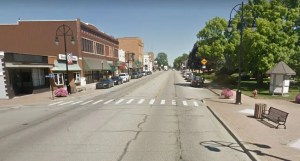Rails Into the Thumb – Cass City and the Detroit and Huron Railroad, 1913- Video
The Detroit and Huron Railroad opened in 1913, linking Cass City and Bad Axe. Once vital to Michigan’s Thumb, it ran its final train in 1951 before fading into history.
News & Fun in Michigan
 Bad Axe is the largest city in Huron County, Michigan. Located near the center of the Thumb, it’s the county seat.
Bad Axe is the largest city in Huron County, Michigan. Located near the center of the Thumb, it’s the county seat.
The Detroit and Huron Railroad opened in 1913, linking Cass City and Bad Axe. Once vital to Michigan’s Thumb, it ran its final train in 1951 before fading into history.
Michigan disc golf is now solidly established in the Upper Thumb region. These eleven courses vary from practice to tournament caliber.
Photograph shows farmers bringing bean harvest by horse?drawn wagon to the Bad Axe Grain Company around the 1910s. Reflects the rise of grain elevator infrastructure that supported Michigan’s rural economy.
An early-1900s photo captures the Bad Axe chicory plant tied to the railroad and regional farms. Operated by E. B. Muller & Co., it supported Michigan’s coffee-substitute trade in the first half of the 20th century.
Thrifting isn’t just a trend—it’s a practical, sustainable, and community-driven way to shop. In Michigan’s Thumb region, a network of local thrift stores offers everything from affordable clothing to household goods, while also giving back through jobs, volunteer opportunities, and local …
On May 1, 2025, around 70 protesters rallied at Huron County Courthouse, advocating for essential services and civil rights. Their demonstration highlighted concerns over federal policy impacts on education, healthcare, and democratic principles amid challenging weather conditions.
Huron County residents in Michigan will participate in a May Day protest on May 1, 2025, advocating for civil, labor, and voting rights. This rally reflects broader concerns over inequality, voting access, and public investment in healthcare and education.
At the turn of the 20th century, Bad Axe, Michigan, thrived with commerce, featuring horse-drawn wagons and the New Schrader House hotel. This era’s essence is captured in a postcard, highlighting community, travel, and civic pride, now replaced by modernity.